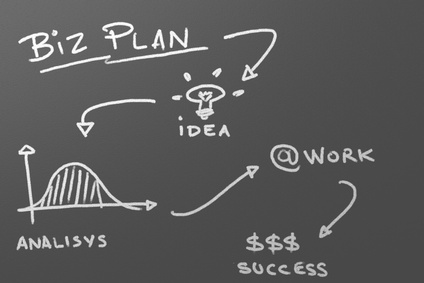Do you have a business you have started but you need financial help for? You need a business plan. Do you want to start a business but the money needed to start is not forthcoming? You need a business plan to access financial help. Or Do you have a thriving business but NO business plan? You need a business plan.
A business plan is simply a collection of all your business entails – what you would do and how you would make a profit from the business. The essence of starting a business is to offer solutions and then make a profit. This is what your business plan shows in a detailed summary. Your business plan helps you to avoid excesses that may hinder your business success. The benefit of a business plan cannot be overemphasized.
Below is an outline of what a business plan should contain.
I. Executive Summary
The Executive Summary is probably the most important aspect of your plan. It should communicate your company’s competence to be successful in a competitive market. It summarizes the other sections in your plan and should be written last.
Company Description
In this section of your plan, the nature of your business and your competitive advantages should be discussed. It should contain name and location, your company’s mission, location, and geological information, products or services, and competitive advantage.
Market Analysis
This section should reflect your knowledge of your industry. You should discuss the characteristics of your target market as well as the size of your target market. Analysis of size and growth trends, economic/seasonal technical factors which affect profitability, target market and competition should be included.
Marketing and Sales Activities
This section should contain a discussion of marketing and sales activities and how these activities will help you meet the sales and profit levels in your financial statements. Marketing and sales strategies should be conveyed, as well as the keys to success in your competitive environment. This should contain overall sales and marketing strategy, advertising and promotional programs, pricing policy and other marketing tactics – joint ventures, strategic alliances, etc.
Products and Services
You should describe in detail your products and services, product lifecycle, proprietary information, and research and development procedures and capabilities. A list of suppliers should also be included. Description of plant and/or facilities, Method of selling, distributing and servicing products to potential customers, Management information systems for accounting, customer service, Quality control strategy, Inventory control (if applicable), Other operational concerns etc should be stated clearly
Management and Ownership
This section must emphasize your management team’s talents and skills. It should also indicate what skills and talents they bring to the company that makes it unique from your competition. This includes a form of business, principal/key employees, the board of directors, organizational chart and responsibilities and resumes of key personnel.
Financial Data
Projections and/or historical financial information with assumptions are presented in this section.
Financial statements should reflect five (5) or more years of operational history; scenarios can be included. This section also includes the use of funds and long-range financial strategies to liquidate investors, financial history, income statements, balance sheets, cash flow charts, three to five year financial projections (1st year monthly, remaining years annually), assumptions on which projections are based, key business ratios, explanation of use and effect of new funds, ability to repay investors.
Appendices or Exhibits
Additional detailed or confidential information that might be useful to the business plan but is not appropriate for full distribution may be presented here. Examples of appendices or exhibits
include the following:
1. Resumes of key managers
2. Pictures of product
3. Market study
4. Patents, copyrights, and trademarks
5. Corporate tax returns for the last three years
6. Aging of accounts receivable and payable
7. Copies of existing financial institution promissory notes.
8. Trade, bank and character references
9. Estimate or invoice for equipment to be acquired or purchased
10. Copies of lease or letter of intent to lease
11. A contract for purchase (buyer and seller agreement)
12. Articles of Incorporation, By-Laws, and Certificate of Good Standing or Partnership Agreement
13. Copy of warranty deeds and appraisals for property to be pledged by business or guarantors
14. Organization chart
15. Personal financial statement for each shareholder partner
16. Personal income tax statement for the last three years for each shareholder, partner
This outline should be viewed as a framework for conveying information about your business idea or going concern. It may not include all the nuances which are unique to your business.
This is the summary of the outline. Please feel free to amend the outline where applicable. We encourage you to submit more information about your business rather than less. Include information specific to your business.







I’d like to begin my personal blog one day. This was a really nice weblog that you produced here. Keep up the good work.
Hi Bonny,
Have you started your personal blog?